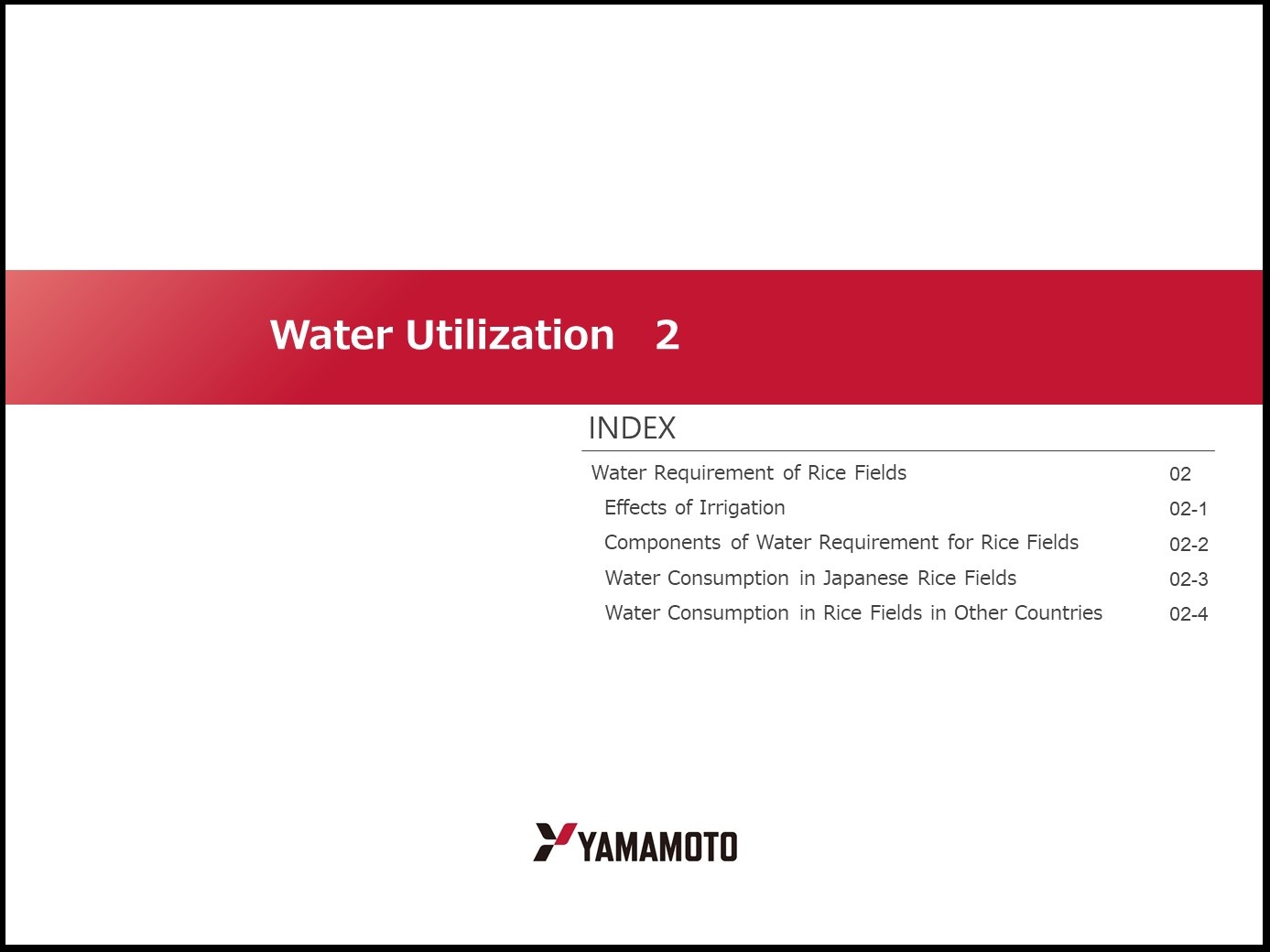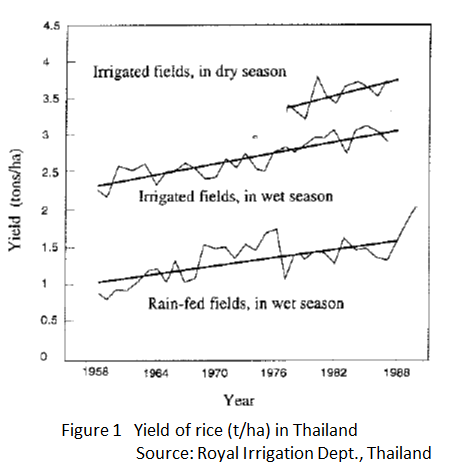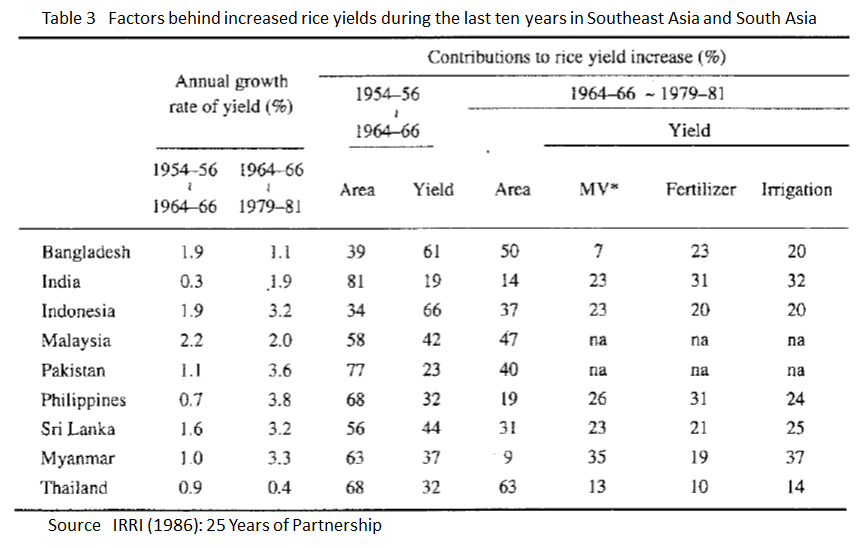24. Water Utilization 2
- INDEX -
Water Requirement of Rice Fields
Effects of Irrigation
Components of Water Requirement for Rice Fields
Water Consumption in Japanese Rice Fields
Water Consumption in Rice Fields in Other Countries
Water Requirement of Rice Fields
Effects of Irrigation
Usefulness of water:
The direct purpose of rice field irrigation is to supply water and nutrients to growing rice plants, and to obtain maximum production. The nutrients necessary for the growth of a rice plant are usually absorbed by the roots in the form of a water solution. The nutrients in the water solution carried into the plant are used for growth of the plant, and very little of the water is stored in plant cells. Most of the water transpires, by the process of photosynthesis or respiration. The importance of water depends upon which growth stage the plant is in.
A shortage of water in the period from the panicle differentiation stage, which includes the heading stage, to the milk-ripe stage causes the greatest damage in view of yield decrease, while that in thee non-productive tillering stage has very little effect on yield.
Amount of transpiration and transpiration coefficient:
From the physiolo-botanical point of view, the amount of transpiration can be considered to correspond to the water volume required by the rice plant. Generally, the amount of transpiration is small at the beginning of growth, is largest at the active tillering stage, and decreases a little at the reproductive stage. An example of observation in the dry season in Thailand shows the change in the amount of transpiration as follows: it was 0.3 mm/day ten days after the rice transplantation, and increased to the level of 3mm/day about 30 days after transplantation.
It reached its maximum of 8 mm/day about 55 days after transplantation at the maximum tillering stage, and then decreased to the level of 6 to 7 mm/day. The total amount of transpiration during the whole period of growth depends upon the variety of rice, the length of growth period, and the condition of water. The ratio of the total weight of transpired water to the dry matter weight of the reaped rice (excluding that of the root), which is called the transpiration coefficient, usually lies in the range between 300 to 400.
Benefits of ponding in rice fields:
Use of irrigation should not be viewed only in a physiolo-botanical sense. The benefits of ponding rice fields in a broad sense should also be taken into consideration, as shown in the following:
1)Weed control: It is difficult for weeds which grow on dry farmland to live in flooded fields with water. Although aquatic weeds may grow, the number of varieties of these weeds is less than that of weeds on dry land, and they grow less likely.
2)Temperature control: Because the heat capacity of water is much larger than that of air, and vaporization of water require a lot of latent heat, ponding helps to mitigate the change of the atmospheric temperature.
3)Prevention of damage by small animals: Small animals such as field mice cannot get into rice field with water.
4)Prevention of soil sickness: When the same crop is cultivated repeatedly on the same dry farmland, various salts accumulate in the soil, causing more or less damage to the crop. In the case of ponded fields, however, repeated cultivation is allowed because harmful substances are removed by water.
5)Supply of nutrients: Irrigation water contains various rich nutrient salts, organic substances, and fine particles of earth. These are supplied to rice fields with the water, giving significant fertilization effects.
6)Desalinization: When water in soil moves during irrigation, the soil is cleaned because harmful salts accumulated in the soil are removed by the water. Owing to this feature, wetland rice can be used as a cleaning crop in semi-arid areas.
Effect on yield increase:
It is known that irrigation results in yield increases. In Thailand, for example, the yield of irrigated rice fields in the wet season (supplementary irrigation) is about twice that of rain-fed rice fields, and the yield of irrigated fields in the dry season (complete irrigation) is 2.6 to 2.8 times that of rain-fed rice fields (Fig. 1) The factors contributing to the yield increase of rice in countries in Southeast Asia and South Asia (increase of the area, introduction of high-yielding varieties, fertilizers and irrigation) were compared, and the contribution rate of irrigation was shown to be 14 to 37% (Table 3).


